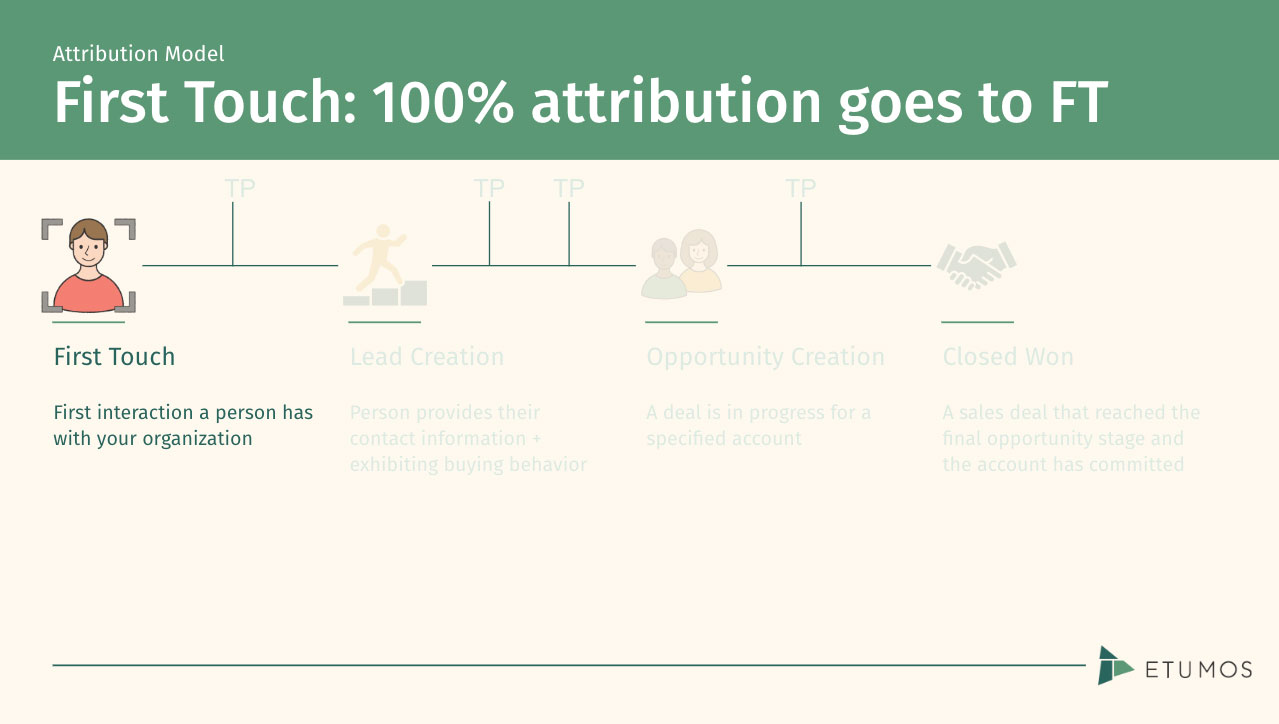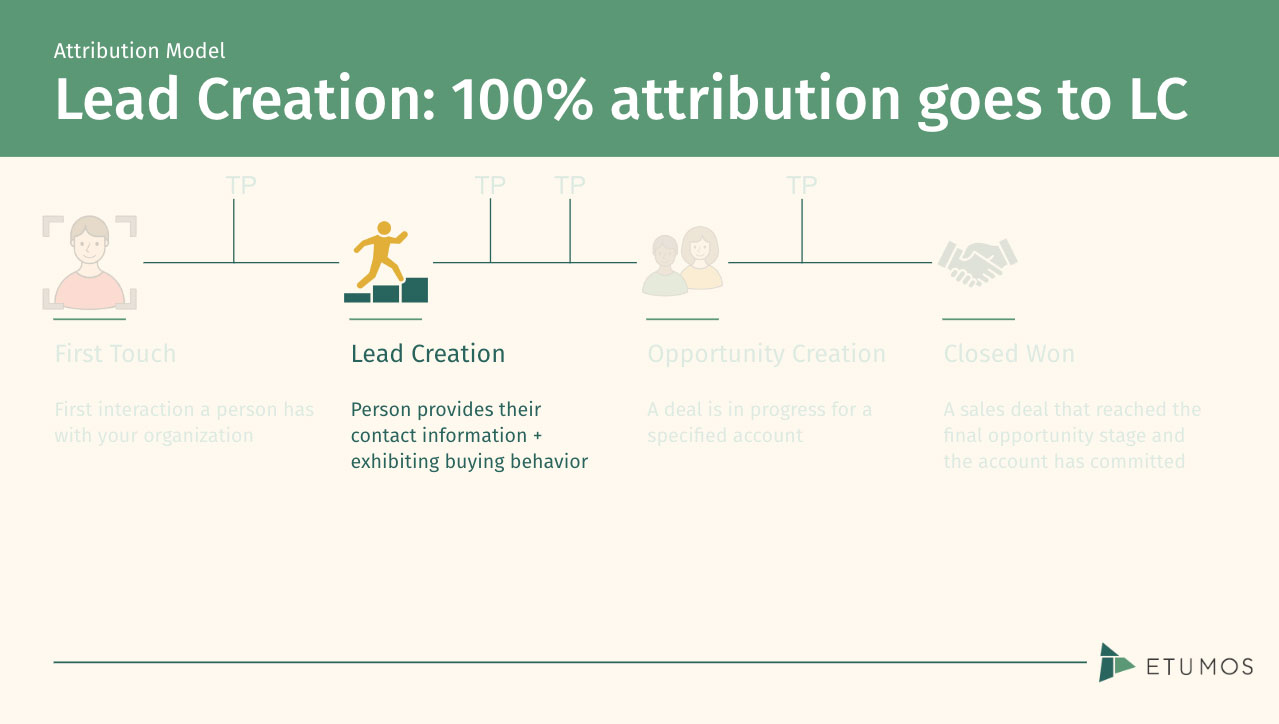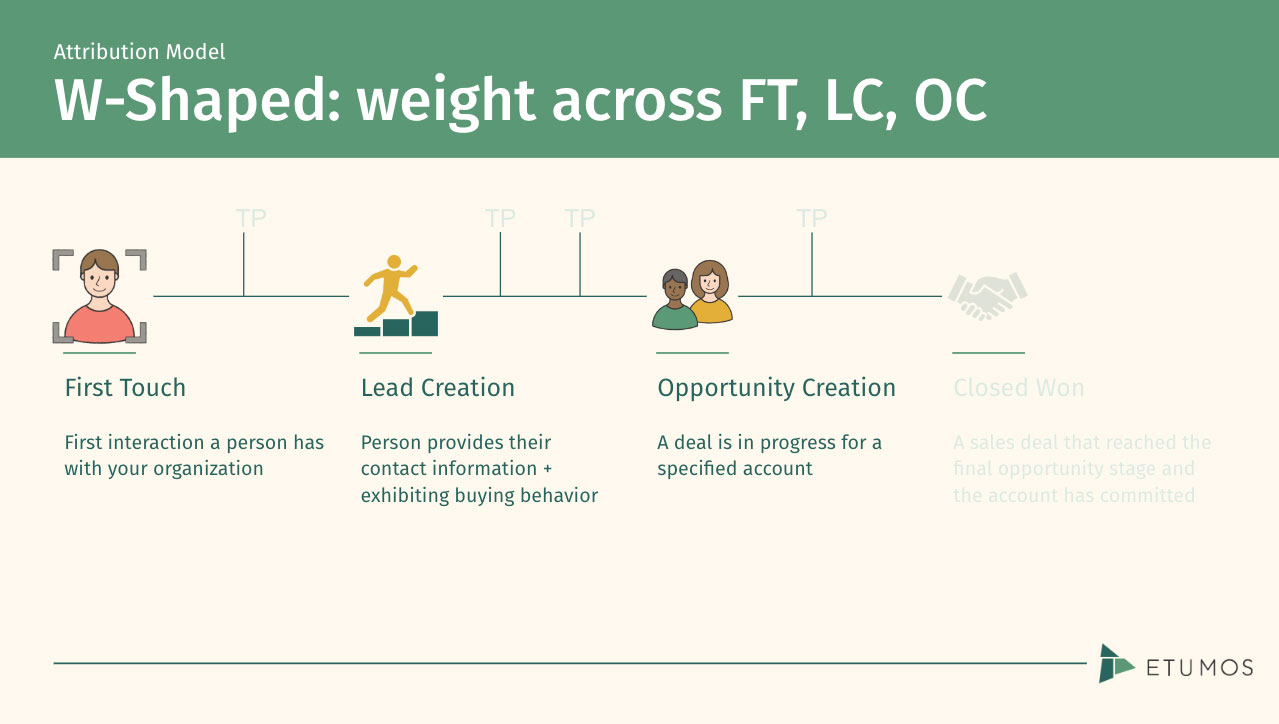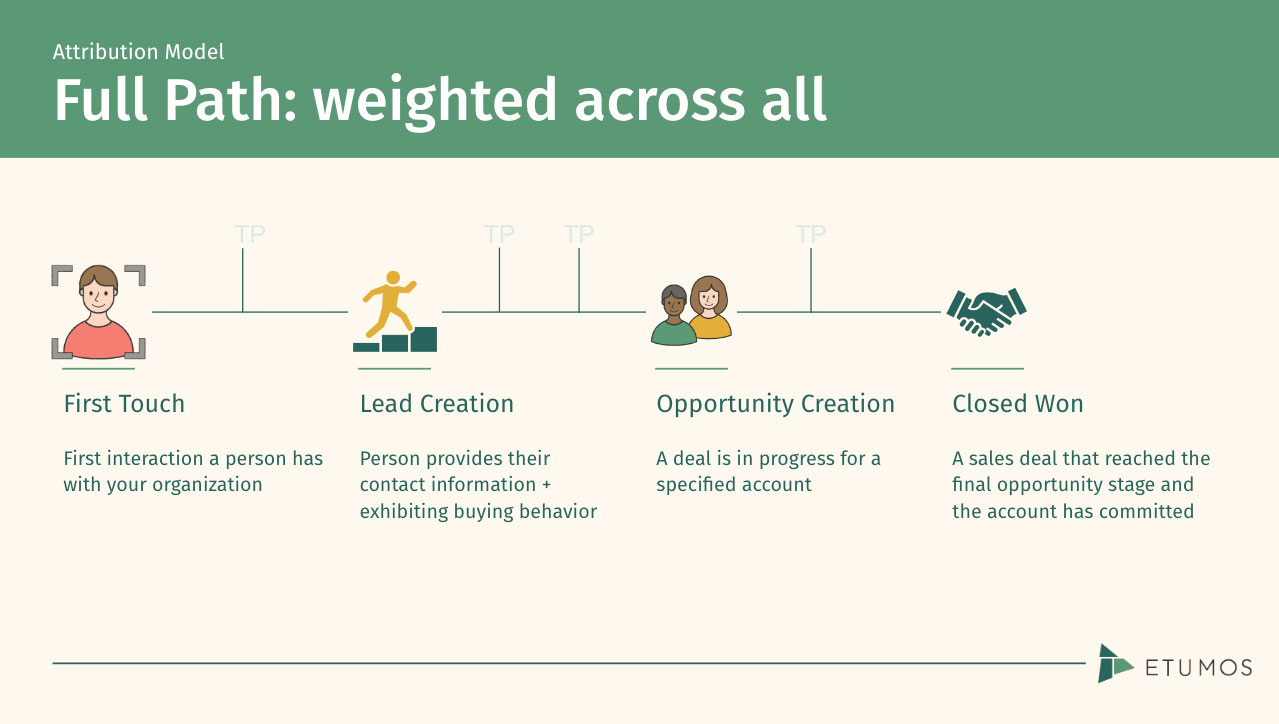Attribution is a word that has many teams scratching their heads on how to accurately define, set up, and effectively report in a way that meets the needs for a variety of teams without increasing time spent on reporting.
Setting up a marketing attribution process can seem daunting, but with a basic understanding of the terms, models and ways to implement, your marketing team is one step closer to a world with better data, reporting capabilities, and strategic, data-backed, decision-making.
Let’s chat about the 411 on Attribution
Attribution is the evaluation of one or more meaningful engagements to understand impact on transitions in the lifecycle. Breaking it down further, attribution is tracking detailed information about engagements that an individual has had with your brand. Further breaking down to knowing who the person is, what they engaged with, and what vehicle brought them to your organization as well as how, and when their engagement happened at an individual level and at an opportunity level.
Ultimately with an attribution model in place, you can transform the way you talk about initiatives from clicks, opens, and attendance to influence on pipeline and revenue.
Attribution is, however, more than just meaningful engagements. It’s used to talk intelligently about different journeys and use the insights into different journeys to answer a variety of questions. The key journeys your team should consider are the First-touch Model, Lead Created Model, U-shaped Model, W-Shaped Model, and the Full-Path Model. Each of those models answer different questions your team can use to understand different aspects of the marketing and buyer funnel.
Tell me more …
You’re probably asking yourself right now, ‘Sounds great! Now why is attribution necessary for Marketing Operations?”
The marketing operations (MOPs) team is the strategic partner to all the other teams. MOPs help to define, set up, and automate your tech stake. The MOPs team is key to understanding how the platforms fit together, what data can be divulged from them, and, most importantly, how to automate it all to work seamlessly.
As a key stakeholder in the attribution process, you can identify gaps in the current process and advise other teams on how to best set up their processes and infrastructure to better equip the organization with the necessary data for attribution reporting. This will ultimately help the marketing operations team to garner support in the standardization and automation of processes within your MAP or CRM to avoid manual work-arounds to identify the necessary data for attribution reporting. Standardization will ultimately support best data hygiene practices, resulting in higher quality data and less time and effort wasted on data cleaning and more time on analysis.
Is your organization ready for attribution reporting?
Now that you’re on board to developing an attribution model, you need to know if your team is ready. The level of sophistication for your attribution reporting depends on what processes your team has in place today. *nudge nudge* This is a great time to start requirements gathering and pull in stakeholders from each team that will rely on the attribution data.
Foundational Level Requirements
If your team is starting at ground zero, a good place to start is having an acquisition program and/or first UTM capture strategy in place for tracking what brought a person to your organization. This requires having a consistent naming convention and structure for all your UTMs (campaign, medium, source, content, term). The key here is the data that is coming into your system needs to be clean so that the teams have confidence in the data analysis and results.
Intermediate Level Requirements:
At an intermediate level, your team will have a process in place to track every UTM that comes in and a lifecycle processing strategy to be able to compare data and associate certain engagements with a lifecycle stage transition. These components allow you to lean away from single-touch models, which can be limiting to answering journey related questions, to multi-touch models that will open up the breadth of your reporting and data insights. I would be remiss if I didn’t add here that this still requires a clean and consistently used structure for both your UTMs and Lifecycle stages.
Advanced Level Requirements:
The most advanced level requires a few additional strategies and opens the door to inviting in additional tech to automate the processes. When you’re at the advanced stage, your team should have a UTM process that captures the information from every individual’s engagement, a lifecycle tracking process, and campaign and program structure in both your MAP and CRM platforms.
These components give your organization the ability to use UTM information and program/campaign membership to track marketing efforts across the funnel and measure ROI across those efforts (both digital and non-digital). Teams can also expand to use a BI tool to measure aggregates from all channels and mediums to form a complete view of a journey and develop advanced dashboards. All of this can be done with out-of-the-box means.
Data, Check. Processes Built, Check. Now let’s choose a model.
Let’s jump ahead into the future. Your team has the data and processes in place and is ready to report on attribution. How do you determine which model will work best for you? The answer is not black and white. It depends on what questions your team is trying to answer. Let’s dive into the different model journeys.
Journey #1: First-touch Model
This is considered a single-touch model. 100% of the attribution is given to the first engagement that a person has with your brand on account. You use this model to answer questions like, “What content piece is most successful at bringing brand awareness?”

Journey #2: Lead Created Model
Similar to the first touch, this is also a single-touch model. 100% of the attribution is given to the engagement that promoted a known person (a.k.a they filled out a form). You would use this to answer more detailed questions about what drives a person to provide their information. This type of engagement implies a more motivated buyer!

Journey #3: the U-shaped Model
Now we are journeying (get it?) into the multi-touch models. The U-Shaped model splits up the attribution between the first touch and the lead created engagements. Teams use this to understand what the journey is from awareness to a lead. This information is useful for top-of-funnel campaigns and initiatives.

Journey #4: W-Shaped Model
This model brings opportunity dates into play, but gives a percentage of the attribution to the engagement that happened right before the opportunity was opened. This model is extremely useful in answering pipeline related questions like, “How does content change as a person progresses through the funnel?” or “What campaigns are best at converting opportunities?”

Journey #5: Full-Path Model
This final model incorporates opportunity closed information by giving a quarter of percentage to FC, LC, OC, and Closed. This model is important to answer questions for closed deals to understand how opportunity journey’s differ when they are closed won or closed lost.

Conclusion
Because of the quantity of data and the increasing simplicity of accessing it, attribution has popped up as the fashionable word. While it may be easy to theorize, putting everything together and shuffling through data to find the necessary information can be difficult to navigate.
The guidelines set up above help to provide a framework for your team on starting the journey to better reporting on marketing attribution, attribution model decision-making, reporting on your team’s marketing funnel, and lead to revenue mapping.
Attribution, the evaluation of one or more meaningful engagements to understand impact on transitions in the lifecycle, if done right, will revolutionize the way that your team understands campaigns success and the customer journey.
Comment below if you’ve implemented an attribution model or attribution reporting strategies!







